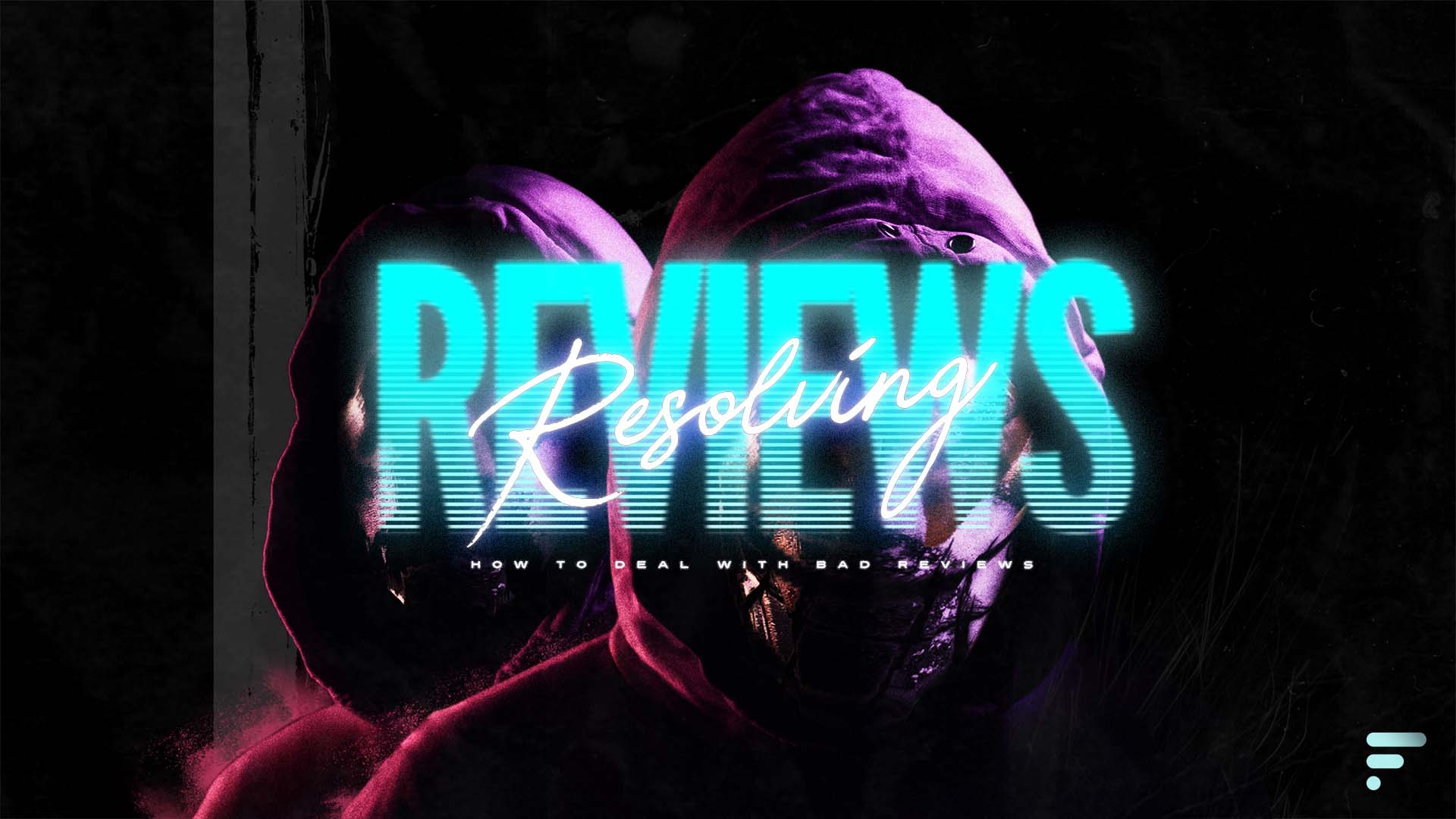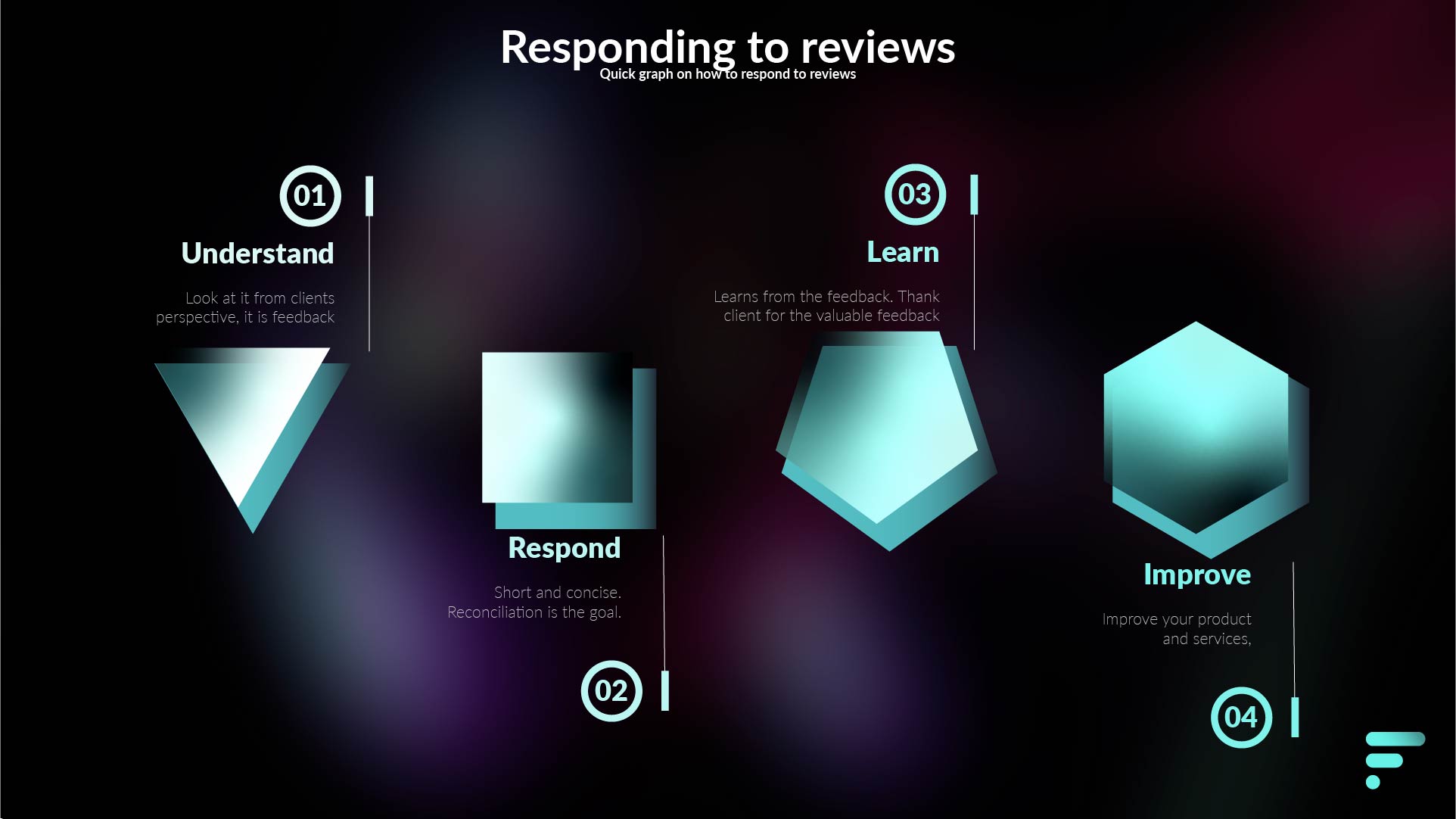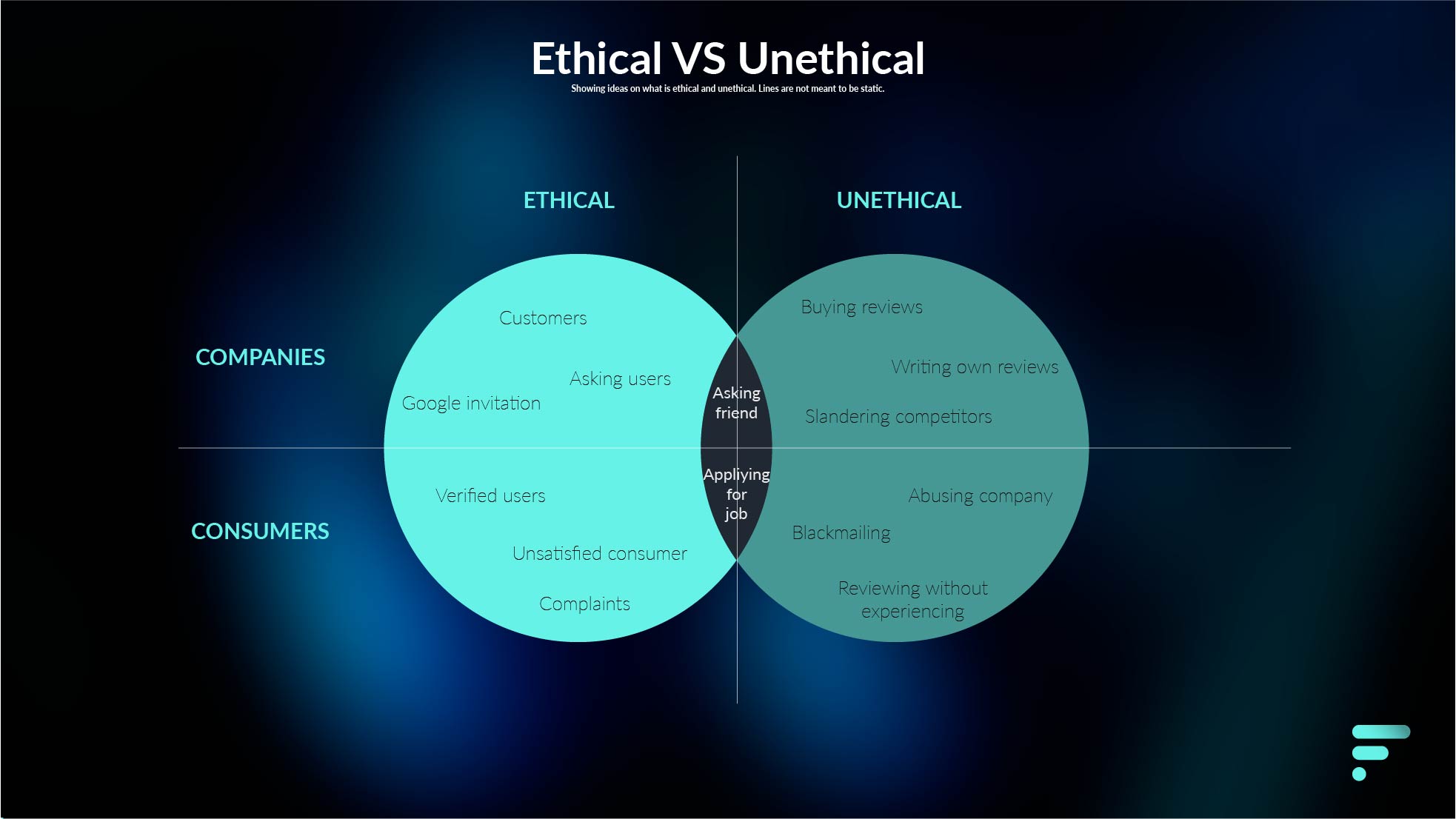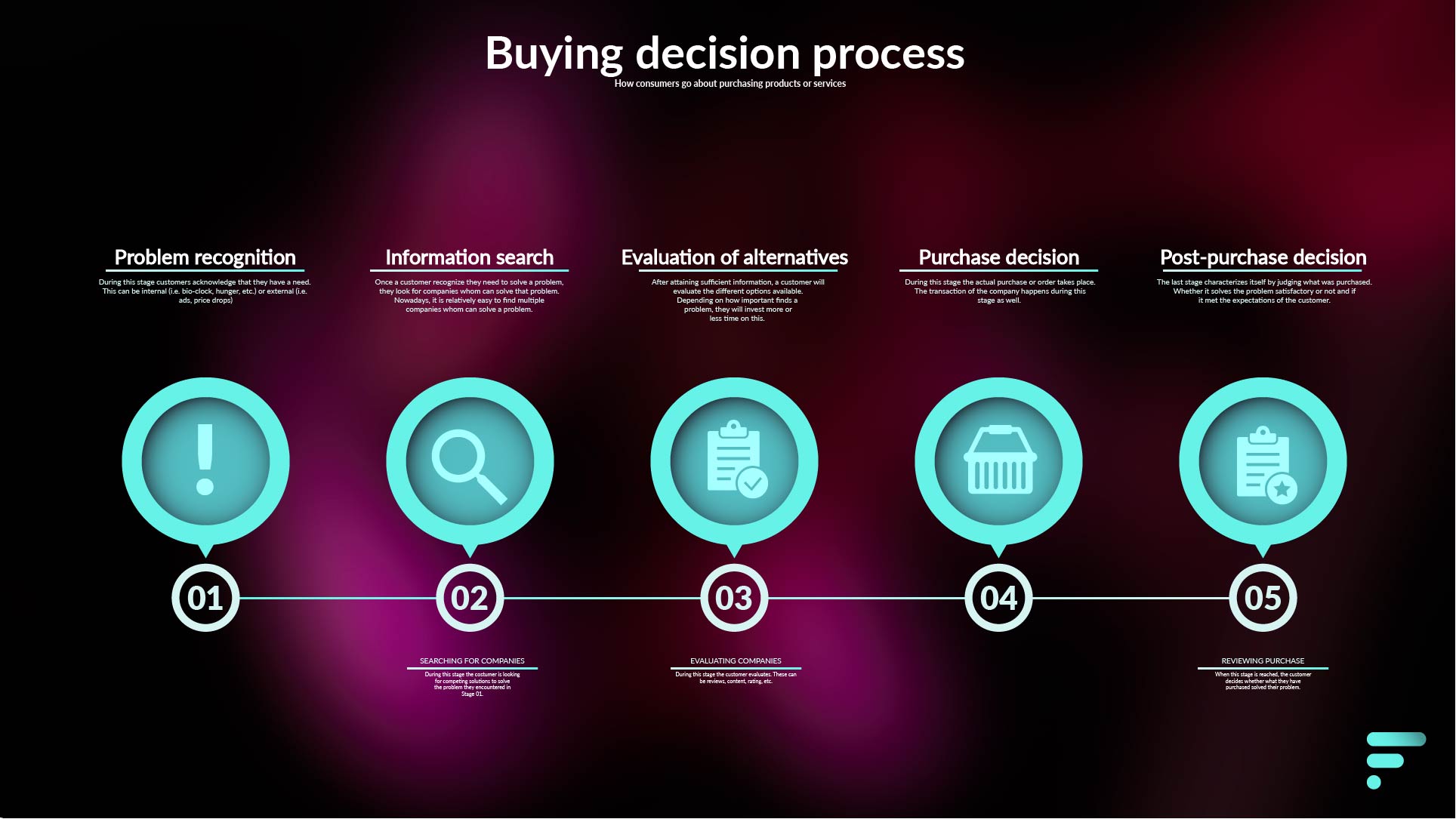Resolving Reviews
How to deal with negative reviews

A big chance you stranded here to read what you could do about online reviews that do not particularly flatter your business or even you as a human being.
You may wonder how to deal with bad reviews or how to respond to them. In this article we will briefly look into the best practices to responding to reviews. We will also tackle unfair reviews and explain how you could deal with them. Moreover, we will also dig a little bit into dealing with unethical reviews.
Later we explore more in depth the reputation part of reviews and the ethicality of reviews. From there we make a case why building a reputation (or brand) outside of reviews is important for any company. This will help when a company gets hit by a skilled wordsmith, whom makes fillet from your company’s reputation.
Responding to negative reviews
There are many articles explaining extraordinarily well what the best practices are when responding to reviews. It is more than likely that you stumbled on those sites before starting to read this article. Consequentially, you will have a pretty good feeling about how to deal when responding to reviews.
To not over regurgitate the ABC’s of responding to reviews, keep the following points in mind.

- Always listen to the feedback, sometimes you must read in between the lines;
- Respond politely and come up with a solution that helps both parties, remember both want a win-win;
- With your response try to highlight why your company is adequate to resolve the problem and thank them for taking the time to write a review;
- Learn from the review to improve your product and services.
That does not cover all the things you could or even should do, but it starts with problem recognition, resolving problems and reconciliation of some sort. At the end of the day a company provides a product or service that the customer wants to buy.
A mismatch during or after the transaction causes discomfort which can lead to negative feedback.
Moreover, negative feedback tarnishes the reputation of a business, which can cost sales on the long run.
How to deal with unfair reviews
One can make the distinction between a fair and unfair reviews.
To some, every negative feedback is unfair and to others it is a powerful learning moment. A fair negative review can bring much more to a business than any other type of feedback. Namely, feedback that allows a business to change and become better.
Unfair reviews, on the other hand, are the most difficult to resolve. They may lack ground on which you could work on to resolve. Though unfair reviews can be difficult to distinguish, they can be distinguished from fair ones, to some extent, by the purpose the review has.
Whereas a fair one exposes the experience a user had, instigating change in that process, an unfair one may just want to harm a business. Though the line between fair and unfair reviews can be slim, you can approach them in a similar way.
Despite how graciously you may have presented yourself to clients, you will (imperative) have to deal at a certain point with clients that have an unrealistic view of what you are doing. Or – heck – just not be a nice person. Some may just leave an empty review with a one-star rating. Or if they do, commentate that if they could give you a zero star they would.
Without any feedback you can work on, how do you even start to resolve the issues in question? At the end of the day, if you try to explain a situation or even try to contact the reviewer you may be worse off.
With empty reviews, you do not have a lot of a margin of error and trying to remove those reviews can have repercussions. Now what can you do about it?
If you are a proud tradesman or businessman an unfair review will affect or bother you to some extent.
Despite the discomfort you may experience, you should aim to contact the customer directly. Try to follow the steps we covered before and settle things offline.
The reason why you will want to move the conversation offline is to mitigate more damage. Either by the client or even you.
When you directly contact clients, coming from a place of honesty and humbleness helps solve many problems. Particularly when you acknowledge that there was, indeed, something wrong. Most clients will understand the situation and accept a solution that you offer.
There are other cases, where a coherent conversation may not seem possible or just plainly is not possible. May it be that the client is very upset or that even you are upset. It is in these situations when keeping your head cool will help you through.
A short exercise that will help dealing with the situation, is to read the review from another person’s perspective. To look at it as if you were not personally involved. What response would you expect from the business that gives you a good feeling? Remember, that your response is not only read by the reviewer. Many more eyes are watching the response.
In some other cases, when a review is very incoherent and there seems to be no beginning nor end to the bashing. It can also be a good idea to not answer at all and just lay low. The reason why is that prospective customers investigating a company will likely discard it as a single occurrence, a snapshot. Something that is not necessarily representative of the business they may want to embark with.
Keep in mind that many experts will disagree with not responding. Customer engagement is regarded as one of the holy grails, when it comes to managing a company’s image.
In some cases, a manager will want to vent as well. A good exercise to deal with those emotions, is to write an extensive reply. Keep the reply stored somewhere on a computer but do not publish it. This allows emotions to escape on paper. Just remember to not post it. Tit for tat generally does not work, even when you feel it is dishonest or fake.
What about the unethical ones?
There are also other types of unfair reviews that are just, for lack of a better word, plainly unethical. These can be anything from reviews before a company launches a product or service, people whom blackmail or threat for freebies, customers you refuse to help because of abusive behavior or a competitor whom you suspect is doing everything in their power to slander.
Whatever it may be, the illusion of anonymity on the internet, can make people do strange things.
Even though, you may not even be at fault, resolving these reviews is hard. Because you are in the hands of the platforms that publish these reviews. Moreover, these platforms will make it very difficult for anyone to remove reviews. Understandably so.
There are not many options of getting reviews removed. A company can take the legal route to force either a platform or user to remove a review. However, the legal route costs both capital and time, both of which are short with entrepreneurs.
Another option is to check the terms and conditions of the platform and see if there are grounds to get the review removed. Any breach of the terms and conditions can warrant a removal or an adaptation by the user.
Though, you should not be afraid of confronting the anonymous reviewer about it, it can become sour quickly when it is not approached well. You see the mission of the reviewer has been already fulfilled, giving feedback in the hope to stop other customers from purchasing a product or service.
The job of the manager is to not play that hand and put something up, that highlights something positive of the company.
What do reviews really do?
So, what are really reviews? To some extent it is an assessment of how someone has experienced an output. In some cases, it is a numerated feedback. Other times, it is just a written essay of how a person experienced something.
The idea behind reviews is that it can help firms to change or reinforce their proposition. That whatever a company is doing, is the correct or incorrect way of handling their business.
This translates back to the reputation of the firm. Good reviews reinforce a brand and the business practice, and a bad review does the exact opposite.
Though this feedback is important for a company, it also affects the opinion and behavior of new and returning clients. Good reviews can reflect the products quality and company’s reputation. While bad review reflects the defects or flaws of a product or service.
Moreover, the general consensus is that bad reviews has a larger influence on purchasing behavior than good ones. You may have found yourself looking for bad reviews before looking at good ones. This is because we value negative information more than positive when deciding.
Another factor that reviews influence is positioning. Not necessarily as a business, but more from a ranking and traffic perspective on different platforms. Be it on Google, Bing or even Amazon. Both negative and positive reviews influence the positioning on different platforms. Though the importance of the sliders differs per platform (e.g. sales volume, positive or negative feedback, people talking online about a product) it is considered by algorithms when ranking a company.
Reviews and reputation
It is unquestionable that reviews influence reputation, rankings and buyer behaviors. Businesses know that all too well and can use it as a vehicle to polish their brand, positioning and reputation online.
This has been publicly written in newspapers, academically and you may even experience it firsthand (i.e. write a review on TripAdvisor and get a slice of pizza for free – happens fairly often in Amsterdam).
Even if you search for the keyword “review” in your mailbox, you will find plenty of unopened emails asking you to rate whatever product or service you bought online (getting tired of that? You can call that review fatigue).
There is also an unethical extreme, in which businesses write reviews about themselves or outright buy them. One famous extreme is how Vice journalist Oobah Butler, managed to get his “fake restaurant” to the top of TripAdvisor in London without ever serving a meal.
The other way around, also happens frequently. Where companies get blackmailed to offer something for free for fear of a bad review. Or that bad reviews are placed even before a company has opened be it by competitors or annoyed neighbors. Or when employees have a dispute with their employers and decide to slander in anonymity a business.

Reviews and the ethicality of reviews
Verifiability of reviews have always been a problem in the review ecosystem. What one may assume is a verifiable system, can be easily bypassed with the correct information and motivation. Both ethically and unethically.
When it is so easy to manipulate reviews, in how far is it really trustworthy? Information in reviews may seem like something that is unilaterally presented by a peer that purchased a product. But, there is not really a way of knowing for sure if a peer’s issues or praises honestly reflects what a company is offering.
Moreover, someone’s good or bad experience may just be a snapshot of an isolated event. Which is why we value the opinion of many than just a few.
Motivation can play a big role in interpreting whether a review is genuine or not. A bad experience generally speaks for itself, maybe a customer wants to vent. But a good one? Any expert will tell you that in order to get good reviews a company will have to offer something in exchange. Be it a large quantity of unwanted emails or a slice of pizza.
Rarely will a customer leave a positive review. Unless, a company has gone above and beyond to solve a problem. Even then, the chances of getting a review are slim unless you ask.
Now many companies struggle with their online evaluation. Do nothing and competitors will bypass you both by review score and amount. Do something and you will have to offer something in exchange (unless you have a very strong relationship with your clients).
It is with that rationality where it hits the crux of the problem when it comes to the moral dilemma.
The centric question some managers may ask themselves: What would be the quickest way to attain a rating or volume of X with a minimum amount of effort?
Businesses whom suspect their competitors are not playing fair or businesses whom are pushed to a corner because of how rating systems are working against them. Will want to solve that problem. It is affecting their reputation and business.
Stefan Gössling & Co. investigated these review manipulation issues. How they put it is that it is getting to the point were the most rational choice for managers is to engage in manipulation as there is an increasingly competitive environment.
It is here where ethicality should play an important role. Influencing the aggregate numbers for a better positioning or some other goals should be a big no-no. For managers though, necessity obeys no law.
The line of ethicality dwindles from one point to another depending on what is deemed necessary. Is asking a friend to leave a review moral? Maybe clients? Offering a slice of pizza or a bottle of wine for a review? Maybe coffee? Pay someone to write reviews? Offering something free to avoid bad reviews? Riffle a gift card?
One cannot advocate for fixing the systems that are still tinkered on, particularly so when it involves a moral compass that changes directions as often as the wind does. However, there are other more viable ways of creating an online reputation and presence without resorting to breaking a “moral code”.
Even though the answer is not for everyone, it is creating and publishing content.
Find reputation with content
Any manager will want to combat negative feedback by working hard to get positive ones. Balancing the score to an acceptable spectrum, is generally regarded as high priority.
Even though that type of firefighting is understandable, to get there you need to balance the negative feedback by having a lot of positive. One negative review is not counter balanced by one positive. To exemplify, if a manager views a company as a ten but has a nine-star rating, it will be mathematically impossible to get a ten-star rating.
Moreover, if the vision of a manager is to be a nine-point five company, and the company gets a respectable nine, the aggregate will still go down.
There is nothing wrong with getting positive reviews. Neither with getting negative reviews nor replying to them. But a manager cannot make the mistake to misinterpret the process customers go through to justify a purchase.
Consumers do check negative feedback, the majority does, and use the negative feedback as a barometer to judge a company. Consistent high ratings does the opposite, as it undermines the credibility of a company. The simple reason is because no one believes all positive reviews.
To underline the problem, there are many agencies and people, whom argue that more than half of reviews, on for example Amazon, are not from verified buyers. In other words, they are fake reviews.
Buying decision process
There are two specific parts of the buying decision process that affect reviews and content. How customers search for information and the evaluation of the information.

Both evaluation and information search are influenced by how important a purchase is. A bag of potatoes will for example not require any information search. Buying a computer or a car, generally does.
Depending on how much customers are involved with the purchase, a company should invest more or less into creating content. The creation of content can persuade customers to choose a company over another. This is part of image management or branding.
That is not to say reviews are not important, quite on the contrary, but content is a vehicle to help customers in that decision process. It has an equal long-lasting value and helps a company to maintain the reputation managers seek.
It is not for nothing that nearly all major brands invest heavily in the creation of content, becoming a de facto media company. Which seems, for now, the only sure-fire way to thrive. The line between content, e-commerce, marketing and entertainment are in modern companies almost non-existing.
Creating content
With the creation of content, a company should focus on what their target group wants. Creative processes should be tailored to what customers want and what the company wants from those customers.
Content does not need to be restrained on popular things like photographs or videos. It can also be blogs, podcasts, organizing live events or whatever helps a customer choosing for a business.
Although creating content is not for everyone, one should be wise to not focus on a high-end content creation, unless the company is in that high-end bracket. Small companies should focus on a project that is more Blair-Witch than a Transformers production.
Approaching it from a Blair-Witch perspective (which is work with what you have), generally brings authenticity forward. Though keep in mind that customers do not blindly follow messages companies are sending out. However, creating objective content or content that entertains are the ways to go now.
Saying that you are the best Italian restaurant in Amsterdam or showing you are the best Italian restaurant are two different things.
Content shows people what you do. Reviews tell people what their experience was. Content shows, reviews tell.
It is therefore of importance, like in true Hollywood fashion, to show and not tell.

Share this Page






